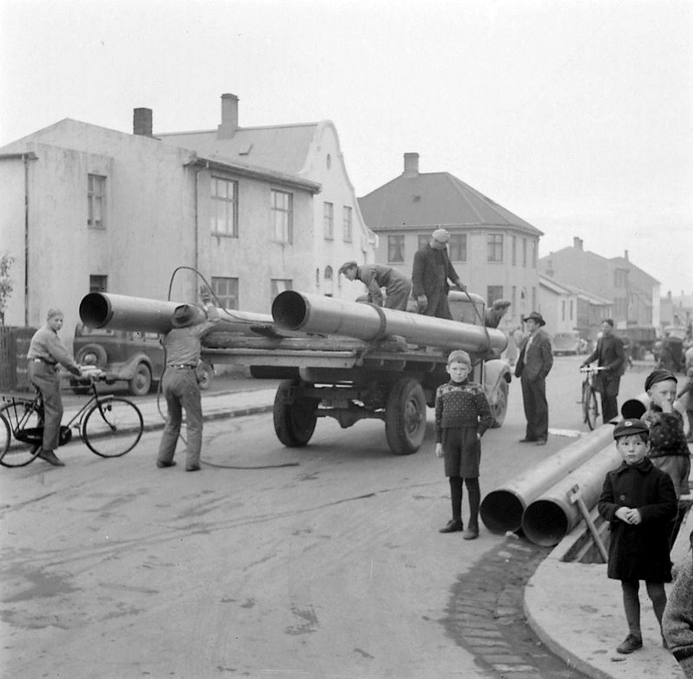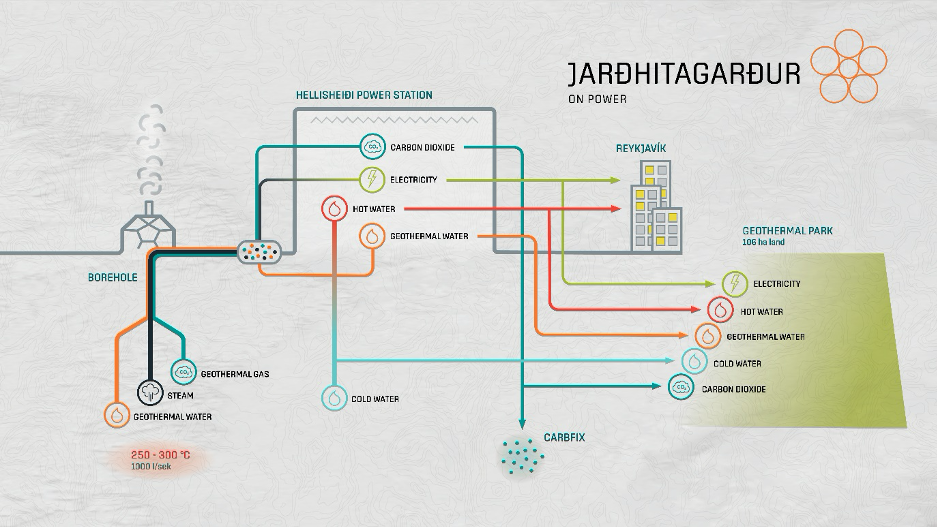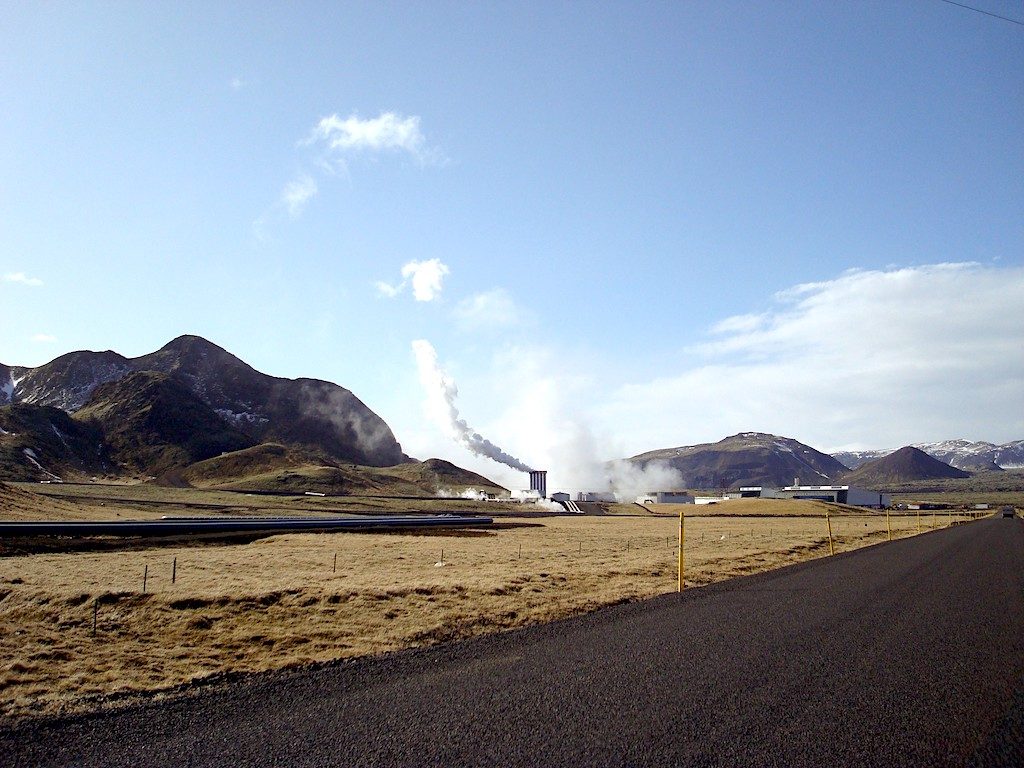Innovation in geothermal energy utilization – the Icelandic story
How Iceland is blessed with its geothermal energy resources both for power generation and heat utilization and the innovations being worked on is topic of this article by Berglind Rán Ólafsdóttir, Managing Director of geothermal power operator ON Power.
In an article published around the year end of 2019 in Icelandic publication Kjarninn, Berglind Rán Ólafsdóttir, Managing Director of ON Power – the geothermal power generation company of Reykjavik Energy, wrote about geothermal energy utilization, benefits and challenges in Icelandic publication Kjarninn.
The article was quite interesting and I though worth to share here. So below the translation of the article shared with permission.
Innovation in energy utilization
We Icelanders have not been spared by the energy of Icelandic nature in recent weeks and been reminded of how important our basic energy infrastructure is. We have access to a unique natural resource that comforts us in cold winters and provides light, drives progress as a community and enhances our quality of life living on this beautiful volcanic island.
We have used our geothermal energy to our advantage and are doing this well. I still argue that we can do better with this asset of our country.
Two of the biggest leaps of progress in Iceland were when electricity production began at the beginning of the last century and when geothermal energy superseded coal, oil and peat in heating. Financial benefits from these steps have been great and geothermal heating alone saves a high of around ISK 100 billion a year (or around USD 800m/ EUR 730m). Excluded in those calculations are, however, the enormous environmental benefits that come from reduced emissions and other health-damaging pollution such as smog.

From the laying of heating pipes on Skólavördustígur street in the middle of the last century. Photo: Reykjavik Museum of Photography.
We can do better with the hot water
About one-half of the water in the district heating system in the capital area of Reykjavik is groundwater, which is heated in the geothermal power stations of ON Power in the Hengill area. Heat supply utility Veitur Utilities, a sister company of ON Power, then distributes the hot water to households and businesses. However, the vast majority of heating utilities in the country utilize hot water derived underground directly. Called low temperature, it is normally picked up in the ground outside Iceland’s volcanic belt. The temperature of the water varies somewhat, but in most areas, heat utilities are still designed in a way that there is considerable waste. The vast majority of water flows from houses into the sewage system without any opportunity for further utilization of the heat still contained in the water. I am sure that the paradigm change regarding our consumption and co-existence with nature we are experiencing these days, will result in future systems being designed with fuller utilization of these assets in mind. My colleagues at Veitur Utilities are actually exploring this these days.
Regardless of the design of systems, the mindset matters a lot when it comes to managing resources properly. Hot geothermal water is an important natural resource that we are entrusted with to manage to the best of our abilities, just like any other natural resource. We can save a lot of hot water if most of us make small changes in our home, such as not allowing heat to escape unnecessarily. We need to keep our eyes open for new approaches. For example, should we cover swimming pools at night, a matter of course in many warmer countries? Should we systematically move towards more use of floor heating system, which utilizes heat more efficiently?
Challenges of high-temperature utilization
At ON Power, the energy produced is almost exclusively extracted from high-temperature areas, more specifically the Hengill area. There, I am even more certain that we can improve. Since the first geothermal power plant in Iceland, Bjarnarflag near Lake Mývatn in North-Iceland, was commissioned, technicians and engineers have designed ever more efficient power plants. The plant of Svartsengi marked a turning point, as it produced both electricity and hot water for the communities in the Reykjanes region. Here, however, I mainly discuss the power plants that are more proximate to me, namely the geothermal power plants of Nesjavellir and Hellisheidi, which both are located in the Hengill area near Reykjavik.
Both plants generate electricity for homes and businesses across Iceland and hot water for the district heating system in the capital area. The Hengill area, which is just outside the capital, is one of the largest and most beautiful geothermal areas in the country and popular as a hiking and recreational area as well. That is also an important part of the geothermal utilization, namely hiking in the geothermal areas and enjoying the natural beauty to clear our minds and re-energize both for tourists and nonetheless for us who live here.
Iceland is rich in hydropower and geothermal energy that are both defined as clean energy sources. However, both face environmental challenges. Among the major challenges of geothermal utilization is the fact that the geothermal heat is underground and thereby not visible except through fumaroles, fissures, and alterations. To evaluate it as an energy source, earth sciences are the key. Decisions regarding the utilization of the Hengill area are based on the results of our scientific research, which aims to create knowledge that will enable us to use the area wisely and in a sustainable way into the future.
When electricity is generated using geothermal energy, both carbon dioxide and hydrogen sulfide are released. The release of hydrogen sulfide is one of side effects of drilling deep into a volcanic area, since the steam extracted has dissolved materials in the bedrock that reach the surface during utilization. Although the amount of carbon dioxide emitted is extremely small compared to the emissions that come from non-renewable electricity production, e.g. with coal, we see this as a challenge because our ambition is to have no emission. And we have already taken steps towards emission-free production.

CarbFix – an innovation paying off
ON Power is in the fortunate position of having been endowed at conception, in 2014, with a wealth of clever ideas for the solution of many of the challenges presented by geothermal energy utilization. What counts the most is the scientific and technical personnel of the parent company, Reykjavik Energy, the University of Iceland and others. The CarbFix method – converting gas into rock – is not just about removing carbon dioxide (CO2) from the environment, but also hydrogen sulfide (H2S). Through endless work, it was possible to find a way to let the idea – mimicking the natural process of carbon dioxide becoming basaltic cavity fillers – work on an industrial scale. It was so successful that within two years, almost all the gas injected into the bedrock had mineralized and thereby permanently extracted from the atmosphere.
Today, one-third of carbon dioxide and the majority of hydrogen sulfide from the Hellisheidi Geothermal Power Plant are mineralized using the CarbFix method, and the next steps for both plants are being prepared. This process, which has succeeded in transforming the daily operation of the Hellisheidi Geothermal Power Plant, enables us at ON Power to operate in such a cost-effective way that carbon dioxide is currently cheaper to sequester with the CarbFix method than to buy emission allowances in the European market. It is a good example of how innovation pays off.
GAS INTO ROCK FULL SUB from Orkuveita Reykjavikur on Vimeo.
Now, our geothermal heat utilities are still a more important contribution to combatting the climate crisis, and in the near term and years to come, it will be clear whether the CarbFix method, which now processes more than 30 tons of greenhouse gas per day, will become an even more significant contribution by Iceland to solving this acute global problem.
Value can be found in many places
A scientist told me a few years ago that it was a sign that humanity had gone somewhat astray since carbon, the basis of organic chemistry, is now threatening life on Earth. That is, however, the reality; the climate crisis is one of the greatest threats that mankind has created for itself and other species. The CarbFix method is a way of permanently removing carbon from its current vicious cycle that we have so terribly disrupted.
However, carbon dioxide (CO2) is also a commodity. Not just as an emission allowance, but also an essential resource in many production processes, such as cultivation of various kind. That is why, at the Hellisheidi Geothermal Power Plant we are exploring separating hydrogen sulfide and carbon dioxide so the carbon dioxide will be pure enough for marketing. Following a one-year experimental period, the international company Algaennovation has erected a algae farm in the Geothermal Park by the Hellisheidi Power Plant. There, carbon dioxide from the power plant is utilized along with electricity, cold water and heat. Algae are nutritious and are used as food for animals and humans. This method for producing food has not the same impact on the use of land, water and other resources compared to traditional agriculture and it will be exciting to see how the utilization of geothermal energy will go hand in hand with environmentally friendly food production in the future.
The benefits of various uses of geothermal resources
Utilizing high temperature resources, many opportunities arise. Many innovators and entrepreneurs see opportunities that we do not see. The Geothermal Park is a platform for ideas and their implementation and thus combines geothermal-related innovation, better utilization of the resource and value creation. As an example, we know silica mostly as a problem in geothermal utilization. It creates scaling that prevents flow in pipes. GeoSilica is startup company that saw an opportunity where we saw problems and now sells various silica-based health products obtained from the operations at the Hellisheidi Geothermal Power Plant.
The increasing emphasis on multi-use in the energy sector is a particularly positive development and, for example, many interesting and important companies have emerged from such efforts at Svartsengi in Reykjanes, such as Carbon Recycling International which produces green fuel and the Blue Lagoon geothermal spa are just two examples. At the Geothermal Park at Hellisheidi , interested companies are exploring the feasibility of various activities, such as fuel production, and baths that utilize heat from the power plant. Climeworks has developed a method for capturing carbon dioxide from the atmosphere, which is then mineralized in collaboration with scientists of Reykjavik Energy. Climeworks has run an experimental plant at Hellisheidi that we could expect to see expanding, thus relieving the atmosphere of even more carbon dioxide.
At ON Power, we are making concrete steps towards an energy transition in transport. Our electric car charging network is expanding, and we are also looking at hydrogen. Hydrogen cars are equipped with fuel cells that convert the hydrogen into electricity which power electric motors that are developing rapidly. The hydrogen seems to be ideal for larger vehicles on land and water, and even airplanes. Water and electricity are needed to generate hydrogen. Both are present plentifully by the Hellisheidi Geothermal Power Plant, whence we now also get hydrogen.

Emission free production and changing times
Humans’ need to prove to themselves and others that they have mastered nature is decreasing. Our focus has changed. It is rapidly moving towards using less and making better use of things. We at ON Power are working on the concept of emission-free utilization of geothermal energy; that we can utilize the gifts of nature in a way that minimizes impact and the environmental footprint.
Currently, most important is reducing the carbon footprint. We intend to abolish it completely by 2030. We also intend to abolish the sulfur footprint. Furthermore, we have made considerable efforts to develop ways to use local vegetation in the Hengill area to reduce the impact left by construction work on our power plants. We are open to comment on other impacts that may be unnecessary while we also want to leave a positive impact in the communities we serve. Our main impact, of course, is bringing light and heat from the earth, which I sincerely hope people appreciate, especially during the darkest and coldest days of the year.
Finally, I would like to invite you to visit the Geothermal Exhibition of ON Power at the Hellisheidi Geothermal Power Plant. There, you can find information suited for the whole family on geothermal energy and I encourage everyone to explore this interesting and beautiful area by enjoying the outdoors and hiking in the Hengill area.
We thank Berglind Rán Ólafsdóttir for this article and the permission to republish.
The article was published in Icelandic on Kjarninn.is in December 2019.


















